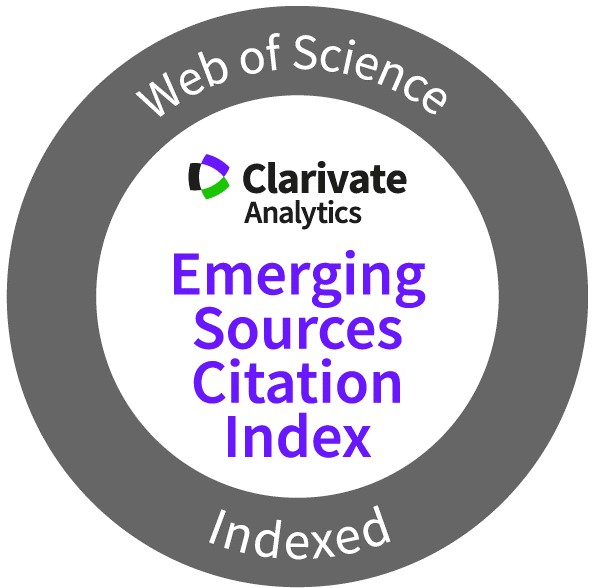Implicación en las clases de educación física y el rendimiento académico en adolescentes
Palabras clave:
Actividad física, implicación, rendimiento académico, educación física y adolescentes.Resumen
La educación física según Vizuete (2005), representa un elemento esencial en el desarrollo armónico, completo y equilibrado de la persona durante su vida. En el proceso educativo escolar, a través de la realización de esta materia se contribuye a desarrollar conocimientos cognitivos, psicomotrices, socio-afectivos y morales. Por otra parte, fomentar la implicación y la responsabilidad en el aula por el alumnado en las clases de educación física, es el primer paso para conseguir que el estudiante esté motivado y mejore en su respectivo aprendizaje durante la etapa escolar. (Juan Antonio Moreno, Parra, & González, 2008). Es por ello, que el principal objetivo de este trabajo es analizar la relación existente entre la implicación del alumnado de educación secundaria obligatoria en las clases de educación física, con el rendimiento académico que estos mismos obtienen. Aprovechando el período de prácticas en el centro de la ciudad de Ontinyent, se realizó la investigación mediante la versión española de Moreno, González, & Sicilia, 2007, de la Social Goal Scale-Physical Education (SGS-PE) de (Guan, Xiang, McBride, Bruene, & others, 2006) y una pregunta ad-hoc para medir el rendimiento académico de los adolescentes, para posteriormente ser analizados en la investigación realizada.
La muestra del estudio fue de un total de 107 adolescentes, de edades comprendidas entre 12 y 16 años, pertenecientes a grupos desde 1º hasta 4º curso de Educación Secundaria Obligatoria. Entre los resultados que obtuvimos, destacamos que cuando mayor sea la implicación en las clases de educación física, en lo referente a responsabilidad y relación con los compañeros de clase, se relaciona positivamente y de manera significativa con el rendimiento académico de los adolescentes.
Citas
Ahrabi-Fard, I., & Matvienko, O. A. (2005). Promoción de una educación activa de la actividad física orientada a la salud en las clases de educación física. Cultura, ciencia y deporte: revista de ciencias de la actividad física y del deporte de la Universidad Católica de San Antonio, (3), 163–170.
Beltrán Carrillo, V. J., Devís Devís, J., & Peiró Velert, C. (2012). Actividad física y sedentarismo en adolescentes de la Comunidad Valenciana. Recuperado a partir de https://repositorio.uam.es/handle/10486/8750
Booth, J. N., Leary, S. D., Joinson, C., Ness, A. R., Tomporowski, P. D., Boyle, J. M., & Reilly, J. J. (2014). Associations between objectively measured physical activity and academic attainment in adolescents from a UK cohort. British Journal of Sports Medicine, 48(3), 265-270. https://doi.org/10.1136/bjsports-2013-092334
Bostani, M., & Saiiari, A. (2011). Comparison emotional intelligence and mental health between athletic and non-athletic students. Procedia-Social and Behavioral Sciences, 30, 2259–2263.
Brosed, R. L., Elizondo, A. P., Arazuri, E. S., & San Emeterio, M. A. V. (2012). La clase de educación física escolar como generadora de un ocio físico-deportivo. Retos: nuevas tendencias en educación física, deporte y recreación, (22), 13–15.
Calvo, T. G., Ruano, F. J. S.-R., Castuera, R. J., & Gimeno, E. M. C. (2005). El clima motivacional en las clases de Educación Física: una aproximación práctica desde la Teoría de Metas de Logro. Apunts. Educación física y deportes, 3(81), 21–28.
Camacho-Miñano, M. J., García, E. F., Rico, E. R., & Ángel, J. B. (2013). La Educación Física escolar en la promoción de la actividad física orientada a la salud en la adolescencia: una revisión sistemática de programas de intervención/The role of Physical Education in the promotion of health-oriented physical activity in adolescence: a systematic review of intervention programs. Revista Complutense de Educación, 24(1), 9.
Dunn, A. L., Trivedi, M. H., & O’Neal, H. A. (2001). Physical activity dose-response effects on outcomes of depression and anxiety. Medicine and Science in Sports and Exercise, 33(6 Suppl), S587-597-610.
Folgar, M., Ruiz Juan, F., & Rial Boubeta, A. (2013). Variables predictoras del abandono de la práctica físico-deportiva en adolescentes.(Predictor variables of the dropping out of physical sport activity by teenagers). CCD. Cultura_Ciencia_Deporte. doi: 10.12800/ccd, 8(23), 93–102.
Gil, P., Campos, R. C., Jordán, O. R. C., & Díaz, A. (2012). Educación Física y hábitos de vida activa: percepciones de los adolescentes y relación con el abandono deportivo. Aula abierta, 40(3), 115–124.
González, D., Camacho, Á. S., & Moreno, J. A. M. (2011). Un estudio cuasi-experimental de los efectos del clima motivador tarea en las clases de Educación Física. Revista de educación, (356), 677–700.
González, J., & Portolés, A. (2014). Actividad física extraescolar: relaciones con la motivación educativa, rendimiento académico y conductas asociadas a la salud. Recuperado a partir de http://acceda.ulpgc.es/handle/10553/11805
Guan, J., Xiang, P., McBride, R., Bruene, A., & others. (2006). Achievement goals, social goals, and students’ reported persistence and effort in high school physical education. Journal of Teaching in Physical Education, 25(1), 58.
Health Behaviour in School Children. (2010). Ministerio de Sanidad, Servicios Sociales e Igualdad - Profesionales - Estudio HBSC - Estudio sobre conductas saludables de jovenes escolarizados de 11 a 18 años. Recuperado 16 de mayo de 2016, a partir de http://www.msssi.gob.es/profesionales/saludPublica/prevPromocion/promocion/saludJovenes/adolesSalud_2010.htm
Kent, M. (2003). Diccionario Oxford de medicina y ciencias del deporte (Vol. 44). Editorial Paidotribo. Recuperado a partir de https://books.google.es/books?hl=es&lr=&id=O7hn1Z_oJd0C&oi=fnd&pg=PA1&dq=Kent.+diccionario+Oxford+de+medicina+y+ciencias+del+deporte&ots=zbrN8IMyXe&sig=l87OPocgIlvYv-yX0KkEZ4WG6Hs
Kim, S.-Y., & So, W.-Y. (2012). The relationship between school performance and the number of physical education classes attended by korean adolescent students. Journal of Sports Science & Medicine, 11(2), 226-230.
Koezuka, N., Koo, M., Allison, K. R., Adlaf, E. M., Dwyer, J. J., Faulkner, G., & Goodman, J. (2006). The relationship between sedentary activities and physical inactivity among adolescents: results from the Canadian Community Health Survey. Journal of Adolescent Health, 39(4), 515–522.
Moreno, J. A., Cervelló Gimeno, E., García, T., Montero Carretero, C., Lacárcel, V., & Antonio, J. (2012). Metas sociales, necesidades psicológicas básicas y motivación intrínseca como predictores de la percepción del esfuerzo en las clases de educación física. Revista de psicología del deporte, 21(2), 0215–221.
Moreno, J. A., González, D., & Sicilia, Á. (2007). Metas sociales en las clases de educación física. Análisis y modificación de conducta, 33(149), 351–368.
Moreno, J. A., Paños, A. H., & Coll, D. G.-C. (2009). Complementando la teoría de la autodeterminación con las metas sociales: un estudio sobre la diversión en educación física. Revista Mexicana de Psicología, 26(2), 213–222.
Moreno, J. A., Parra, N., & González, D. (2008). Influencia del apoyo a la autonomía, las metas sociales y la relación con los demás sobre la desmotivación en educación física. Psicothema, 20(4), 636–641.
Moreno, M. P., Cervelló, E., Jiménez, R., & Del Villar, F. (2004). Aplicación de modelos de ecuaciones estructurales al estudio de la motivación de los alumnos en las clases de educación física. Revista de educación, (335), 371–382.
Ntoumanis, N. (2005). A prospective study of participation in optional school physical education using a self-determination theory framework. Journal of educational psychology, 97(3), 444.
Organización Mundial de la Salud. (2016). OMS | Actividad física. Recuperado 14 de mayo de 2016, a partir de http://www.who.int/mediacentre/factsheets/fs385/es/
Palou, P., Vidal, J., Ponseti, X., & Borràs, P. A. (2005). Perfil de hábitos deportivos de los preadolescentes de la isla de Mallorca. Revista de psicología del deporte, 14(2), 0225–236.
Pérez, L. M. R., Sanz, J. L. G., Sánchez, I. R., & Mata, E. (2004). Preferencias participativas en educación física de los chicos y chicas de la educación secundaria mediante la escala GR de participación social en el aprendizaje. European Journal of Human Movement, (12), 151–168.
Ramírez, W., Vinaccia, S., & Suárez, G. R. (2004). El impacto de la actividad física y el deporte sobre la salud, la cognición, la socialización y el rendimiento académico: una revisión teórica. Revista de estudios sociales, (18), 67–75.
Rijo, A. G., Moreno, J. H., Herráez, I. M., & Medina, S. G. (2014). Necesidades psicológicas básicas en Educación Física según el género y el curos del estudiante. Revista de Investigación Educativa, 32(1), 159–167.
Rodríguez-Hernández, A., Cruz-Sánchez, E. de la, Feu, S., & Martínez-Santos, R. (2011). [Inactivity, obesity and mental health in the Spanish population from 4 to 15 years of age]. Revista Española De Salud Pública, 85(4), 373-382. https://doi.org/10.1590/S1135-57272011000400006
Rojas, H. L. (2008). Aprendizaje autorregulado, motivación y rendimiento académico. Recuperado a partir de http://www.perurevista.com/index.php/liberabit/article/download/1723/1721
Serrano, J. S., Clemente, J. A. J., Abarca-Sos, A., Solana, A. A., & García-González, L. (2014). Efecto de una intervención docente para la mejora de variables motivacionales situacionales en Educación Física. Retos. Nuevas tendencias en Educación Física, Deporte y Recreación, (26), 108–113.
Tremblay, M. S., Inman, J. W., & Willms, J. D. (2000). The relationship between physical activity, self-esteem, and academic achievement in 12-year-old children. Pediatric exercise science, 12(3), 312–323.
Vizuete, M. (2005). Profesor de educación física europeo. Perfil profesional y nivel de competencia. Revista Española de Educación Física y Deporte No376 Enero-Junio 2005, (2).
Publicado
Cómo citar
Número
Sección
Los autores que publican en esta revista están de acuerdo con los siguientes términos:
- Los autores conservan los derechos de autor y garantizan a la revista el derecho de ser la primera publicación del trabajo al igual que licenciado bajo una Creative Commons Attribution License que permite a otros compartir el trabajo con un reconocimiento de la autoría del trabajo y la publicación inicial en esta revista.
- Los autores pueden establecer por separado acuerdos adicionales para la distribución no exclusiva de la versión de la obra publicada en la revista (por ejemplo, situarlo en un repositorio institucional o publicarlo en un libro), con un reconocimiento de su publicación inicial en esta revista.
- Se permite y se anima a los autores a difundir sus trabajos electrónicamente (por ejemplo, en repositorios institucionales o en su propio sitio web) antes y durante el proceso de envío, ya que puede dar lugar a intercambios productivos, así como a una citación más temprana y mayor de los trabajos publicados (Véase The Effect of Open Access) (en inglés).









